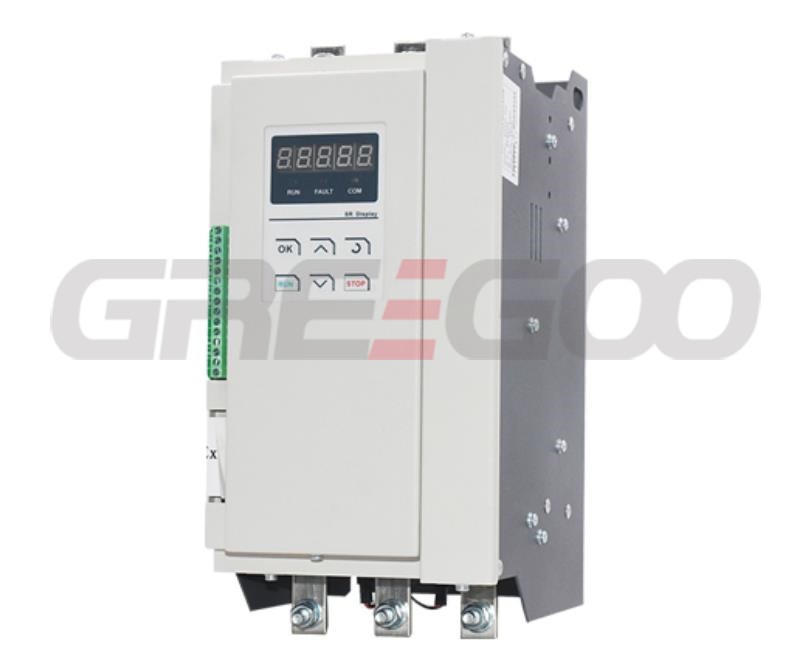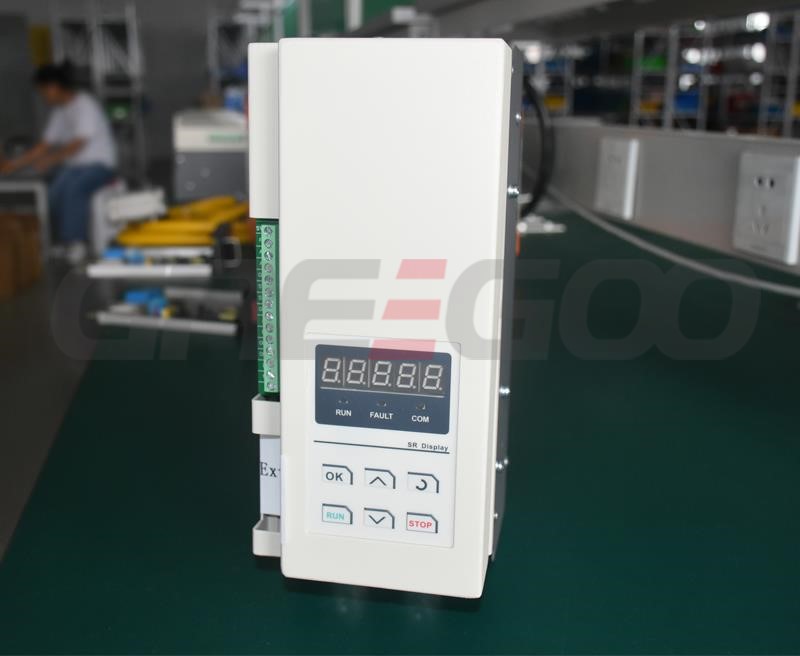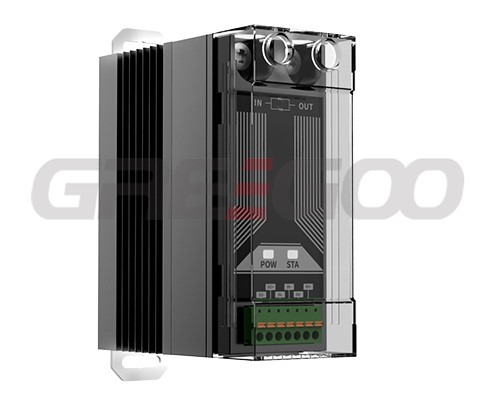3 Phase SCR Power Controller
Home Products SCR Power ControllerUniversal SCR Power Controller3 Phase SCR Power Controller
3 Phase SCR Power Controller
The TSCR series power regulators (Power Controllers) are advanced power control devices designed for high-power thyristor module applications.
Features
-
Intelligent Design: The TSCR series power controllers are a new generation of intelligent power regulation/integration power regulators developed based on years of experience in electric heating control.
-
Advanced Trigger Technology: The control board features internationally advanced six-channel independent triggering functions, using DC wide pulse active triggering technology to ensure input and output optical isolation, with six trigger pulses mutually isolated. This triggering method is considered the safest, most reliable, and stable in the world.
-
Efficient Cooling System: It uses a specially designed finned heat sink and high-power fan, with cooling efficiency more than doubled compared to ordinary aluminum heat sinks, greatly extending the module's lifespan.
-
Reliability and Protection Features: The thyristor module is compact, high-capacity, highly reliable, and has strong overload capability, ensuring high operational reliability. It includes a module over-temperature alarm function to facilitate timely monitoring of the module's working status.
-
Multiple Specifications Available: Offers models with current capacities ranging from 60A to 800A to meet different user needs.
Application
The TSCR series power regulators are suitable for various industrial equipment and fields, including but not limited to:
- Industrial heat treatment
- Electric heating processing
- Material manufacturing
- Aerospace
- Metallurgy and non-ferrous metal processing
- Pharmaceuticals
- Electronics
- Food machinery
- Injection molding machinery
- Coating machinery
- Vacuum coating machines
The TSCR series three-phase power regulator (also known as a thyristor power controller) integrates phase-shifting voltage regulation and power regulation into one power controller. It features multiple protection functions such as overcurrent, phase loss, short circuit, wire breakage, and overheating. It uses an imported high-performance microcontroller for control, ensuring high three-phase balance, good waveform symmetry, minimal DC component, good linearity, high control precision, and stable operation. It is widely applicable to resistive loads, inductive loads, and the primary side of transformers in various industrial fields.
Main applications include:
- Temperature control using heating elements such as nickel-chromium, iron-chromium-aluminum, far-infrared heating elements, silicon molybdenum rods, and silicon carbon rods.
- Temperature control of salt bath furnaces, power frequency induction furnaces, quenching furnaces, and molten glass.
- Primary side control of rectifier transformers and electric furnace transformers.
- Stepless smooth adjustment of voltage, current, and power.
- Constant voltage, constant current, and constant power control.
Features:
- Complete isolation between the main circuit and control circuit, ensuring safety and reliability.
- Innovative and unique design, no need for an external synchronous transformer, and the fan uses a 380V power supply without requiring an external power source, with no phase sequence restrictions. Simple wiring and easy maintenance.
- Capable of soft start and speed regulation for AC and DC motors, primary voltage regulation for transformers, welding machines, temperature control, excitation, electroplating, and water treatment.
Technical Parameters:
- Universal input signals: 4-20mA, 0-20mA, 0-5V, 1-5V, 0-10V, 10K potentiometer, freely switchable.
- Power supply: 380V AC ±10%, compatible with 40-60Hz.
- Load wiring methods: unrestricted delta, star, and star with neutral.
- Automatic phase detection R, S, T, with no phase sequence requirements.
- Output voltage limit, with a range of 0-100%.
- Arbitrary combination of manual and automatic control.
- Soft start and soft shutdown upon power-up (adjustable time up to 60 seconds).
- Built-in limit potentiometer
- LED indicator lights, operation at a glance
-
Transformer Control:
- A) If the design capacity of the transformer is insufficient, the transformer core may become saturated when the current increases to a certain level, leading to a sharp increase in current, waveform distortion, and device damage. The transformer needs to be redesigned, or a maximum load current limiting function should be added.
- B) Instantaneous power outages during operation followed by power restoration can cause the magnetic flux polarity at power-on to "collide" with the residual magnetism polarity (inherent residual magnetism and the decaying magnetic field from the instantaneous outage), resulting in harmful surge voltage and current. Therefore, inductive loads, especially transformers, should use a soft start at power-on to gradually magnetize and a soft shutdown to gradually decay the magnetic field.
- C) Transformers are inductive loads, and narrow pulse triggering is unreliable. Variable pulse width DC triggering technology can provide sufficient time for the load current to reach the holding current of the thyristor, ensuring reliable triggering. Note: Transformer loads should not be tested without load during operation.
-
Pure Metal Loads: Loads such as silicon molybdenum, molybdenum wire, tungsten, platinum, and graphite have low cold-state resistance and require voltage and current limiting at low and medium temperature ranges. As the temperature increases, the resistance increases linearly, and at high temperatures, the load voltage needs to be increased. The current limiting function of the TSCR voltage regulator is specifically designed for these types of loads. Additionally, instruments with multiple PID groups and adjustable output limits can also control load current. For example, FP93, SR23, FP23, SRS10, etc., can be designed to limit the adjustment output in low, medium, and high-temperature zones.
-
Silicon Carbide Rods: Generally, a soft start of more than 1 minute or longer and current limiting are used to avoid the impact current of negative resistance near 700°C (more pronounced with new rods).
-
Constant Resistance Loads (referring to loads with small changes in cold and hot resistance): The control strategy is relatively simple and can use zero-crossing power control to overcome the low power factor and grid pollution of voltage regulation methods. Cycle zero-crossing (duty cycle control) is generally implemented using high-power SSRs. Cycle zero-crossing power control distributes the load current evenly in units of full sine waves. When multiple devices are running, the total power current is relatively balanced (avoiding current concentration in cycle zero-crossing mode), improving furnace temperature uniformity, avoiding ammeter needle collisions, and importantly, increasing power utilization and avoiding the need for power equipment capacity expansion, resulting in significant energy savings. TSCR is an integrated design for power and voltage regulation, capable of both voltage and power regulation (cycle and cycle zero-crossing methods), meeting different control strategies.

Need more information?
Contact us to request pricing, availability and customization options.

SCR Power Controller 3 phase
GH300 is an high reliability Universal SCR Power Controller that has an advanced microprocessor that makes it universal and fully configurable via software.
View More
Single phase SCR/Thyristor Power Controller
10A to 800A, single phase, universal SCR power controller.
View More
GMS20CA Single Phase SCR Controller
20A constant voltage, current and power
View More
Solid state relay with diagnostic
Status output built in solid state relay
View More


















